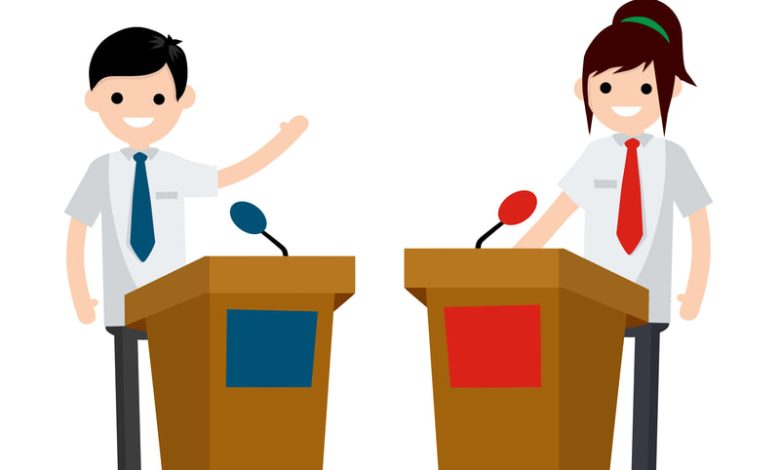Beyond Words: The Subtle Influence of Debate Topics in Persuasion

In the intricate dance of debate, where ideas collide and arguments unfold, there exists a realm that transcends the spoken word. “Beyond Words: The Subtle Influence of Debate Topics in Persuasion” beckons us into this ethereal space, where the choice of topics becomes a silent orchestrator, shaping the very fabric of persuasion. In the human format of this exploration, we unravel the nuances of how debate topics, often overlooked, wield a subtle yet profound influence in the art of persuasion.
Setting the Stage: The Silent Power of Debate Topics
The Unsung Heroes of Persuasion
Debate Topics as Unsung Influencers: In the grand theater of debate, where orators take center stage, debate topics often play the role of unsung heroes. They are the silent influencers that set the stage, framing the discourse within which persuasive narratives unfold. The subtlety of their influence lies in their ability to guide the trajectory of arguments, subtly directing the currents of persuasion without uttering a single word.
Beyond the Surface: Unpacking Silent Influences: To grasp the subtle influence of debate topics, one must venture beyond the surface. These topics are not mere labels but intricate webs of ideas, values, and cultural nuances. They carry an inherent energy that resonates with the audience’s collective consciousness. The art lies in deciphering this silent language, understanding the unsaid that shapes the persuasive landscape.
The Nuances of Silent Persuasion
. Cultural Echoes in Topics
Topics as Cultural Signposts: Debate topics often act as cultural signposts, pointing to the collective experiences, values, and concerns of a society. Persuasion, when grounded in these cultural echoes, gains a nuanced depth. The art lies in recognizing the cultural resonance of a topic and aligning persuasive strategies with the ingrained sensibilities of the audience. This silent connection speaks volumes, fostering a persuasive atmosphere that feels familiar and relatable.
Subtle Cultural Nuances in Persuasion: Within the silent influence of topics, there exist subtle cultural nuances that debaters can leverage. It could be the choice of a metaphor that resonates deeply or an acknowledgment of cultural references. These nuances, when woven into persuasive narratives, become threads that connect with the audience at an emotional level, going beyond words to create a silent yet powerful bond.
The Emotional Undertones of Topics
Topics as Emotional Canvases: Emotions, often unspoken, are painted on the canvases of debate topics. Each topic carries emotional undertones that sway the hearts and minds of the audience. Mastering the art involves not just crafting logical arguments but also navigating the emotional landscapes within topics. The subtlety lies in tapping into these emotional currents, using them as conduits for persuasive expression.
The Silent Dialogue of Emotions: Silent persuasion emerges in the dialogue of emotions that topics silently initiate. It could be the empathy invoked by a social justice topic or the fear subtly woven into a discussion about the future. Debaters who understand this silent emotional dialogue can wield it skillfully, evoking responses that resonate deeply with the audience and leaving a lasting imprint on their perspectives.
The Visual Language of Topics
1. Imagery and Symbolism in Persuasion
Visual Metaphors Within Topics: Beyond the spoken word, debate topics unfold as visual metaphors, conjuring images that linger in the minds of the audience. The art of persuasion involves harnessing this visual language, using imagery and symbolism within topics to create a sensory experience. The silent impact lies in the mental images that topics evoke, imprinting persuasive narratives with a vividness that transcends the limitations of words.
Metaphorical Resonance with Audiences: The choice of metaphor within a topic is a silent yet potent tool. It could be a metaphorical journey that mirrors societal progress or a visual analogy that encapsulates the essence of an argument. The subtlety lies in selecting metaphors that resonate with diverse audiences, creating a shared visual language that facilitates a deeper connection and understanding.
2. Non-Verbal Communication Through Topics
Silent Gestures in Topics: Like a skilled communicator who conveys messages through subtle gestures, debate topics also possess silent gestures that influence persuasion. These gestures could be the unspoken implications of a topic or the silent nods to underlying societal issues. Debaters who comprehend these silent gestures can integrate them seamlessly into their persuasive discourse, allowing topics to communicate on non-verbal levels that augment the power of words.
Utilizing Non-Verbal Cues in Persuasion: The art lies in recognizing and utilizing these non-verbal cues within topics to enhance persuasive impact. It could be the acknowledgment of unspoken challenges or the silent declaration of shared values. These cues act as bridges, connecting debaters with their audience in a silent dialogue that transcends the spoken arguments, fostering a holistic and impactful persuasive experience.
Navigating Controversy and Complexity
The Silence of Controversial Topics
Controversy as a Silent Force: Controversial topics, often met with hushed tones, carry a silent force that shapes the dynamics of persuasion. The art lies in understanding the inherent controversy within a topic and navigating it with finesse. Debaters who can skillfully engage with controversy, acknowledging its presence without succumbing to its volatility, wield a silent yet commanding influence over the persuasive discourse.
Silent Agreements and Disagreements: Within controversial topics, there exist silent agreements and disagreements that form the backdrop of persuasion. Audiences may silently nod in agreement with an argument, or dissent may quietly simmer beneath the surface. The subtlety lies in discerning these undercurrents, adjusting persuasive strategies accordingly, and, at times, acknowledging the silent dissent within a controversial topic.
Layers of Complexity in Topics
Complexity as a Silent Challenge: Some topics silently challenge debaters with layers of complexity, requiring a nuanced approach to persuasion. The art involves not simplifying complexity but navigating it with grace. Debaters who embrace the silent challenge of complex topics, unraveling layers one argument at a time, convey a mastery that resonates with audiences who appreciate the depth and authenticity of their engagement.
Navigating Complexity with Simplicity: The silent influence of complex topics lies in their potential to overwhelm. The art of persuasion involves navigating this complexity with simplicity—breaking down intricate ideas into digestible arguments. This silent act of simplification not only enhances the audience’s understanding but also establishes a connection built on clarity and transparency.
The Ethical Underpinnings of Silent Persuasion
Ethical Considerations in Topic Selection
Upholding Integrity in Silent Influences: The silent influence of debate topics operates within an ethical framework. The art lies in the ethical considerations involved in selecting and navigating topics. Debaters must be mindful of the potential impact—both spoken and unspoken—of their chosen topics. The silent influence, when guided by integrity, contributes to a persuasive discourse that is not only impactful but also morally grounded.
Silent Responsibility of Topic Navigation: Ethical considerations extend to the silent responsibility of navigating topics with sensitivity. It involves recognizing the potential harm that certain topics may inflict, acknowledging differing perspectives, and engaging in debates that contribute positively to the discourse landscape. The art lies in embracing the silent responsibility of topic navigation as an integral part of persuasive practice.
The Ripple Effect of Ethical Persuasion
Silent Ripples of Ethical Persuasion: Ethical persuasion within debate topics has a ripple effect that extends beyond the immediate discourse. The art lies in understanding the silent ripples—how ethical persuasion contributes to a culture of respectful engagement, fosters understanding, and inspires ethical practices within the debate community. Debaters who prioritize ethical considerations in silent influences become architects of a discourse culture built on trust and integrity.
Building a Foundation for Sustainable Persuasion: The silent ripples of ethical persuasion contribute to building a foundation for sustainable persuasive practices. It involves recognizing that the impact of persuasion extends far beyond individual debates and resonates within the collective memory of the debate community. The art lies in aspiring not just for immediate victories but for a legacy of ethical persuasion that withstands the test of time.
Conclusion: The Symphony of Silent Influence in Persuasion
“Beyond Words: The Subtle Influence of Debate Topics in Persuasion” concludes as a symphony, where the silent influence of topics harmonizes with the spoken word to create a persuasive masterpiece. In the human format of this exploration, we witness debaters not as mere orators but as conductors, orchestrating the silent elements of topics to elevate their persuasive performances.
As we navigate the intricate dance of debate, let us not underestimate the silent power of topics. They are not passive labels but active participants in the persuasive exchange, shaping narratives, influencing emotions, and leaving indelible imprints on the discourse landscape. In the symphony of persuasion, mastery involves not only wielding the spoken word with eloquence but also conducting the silent orchestra of debate topics with finesse, creating an experience that transcends words and resonates with the depths of human understanding.


